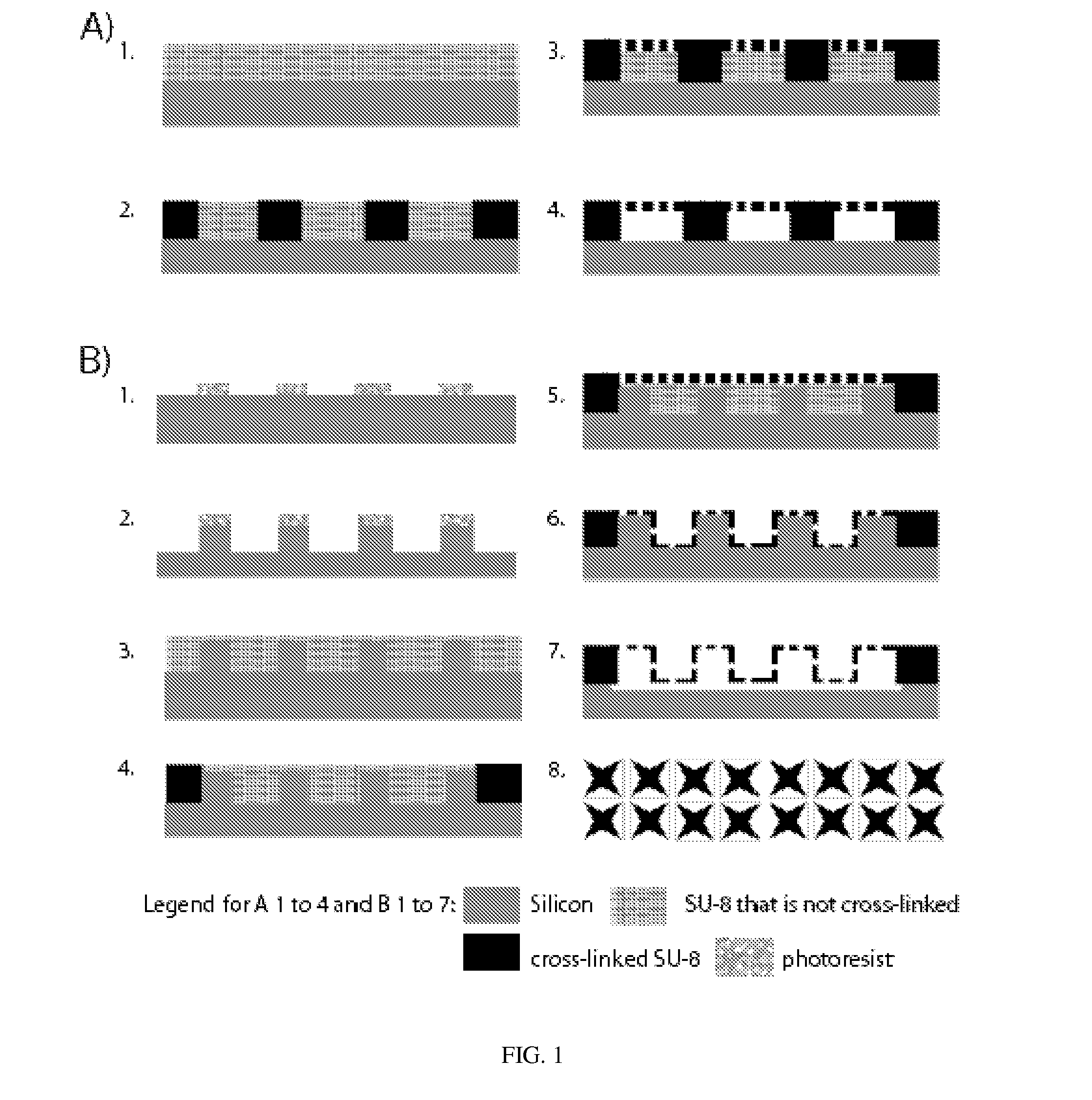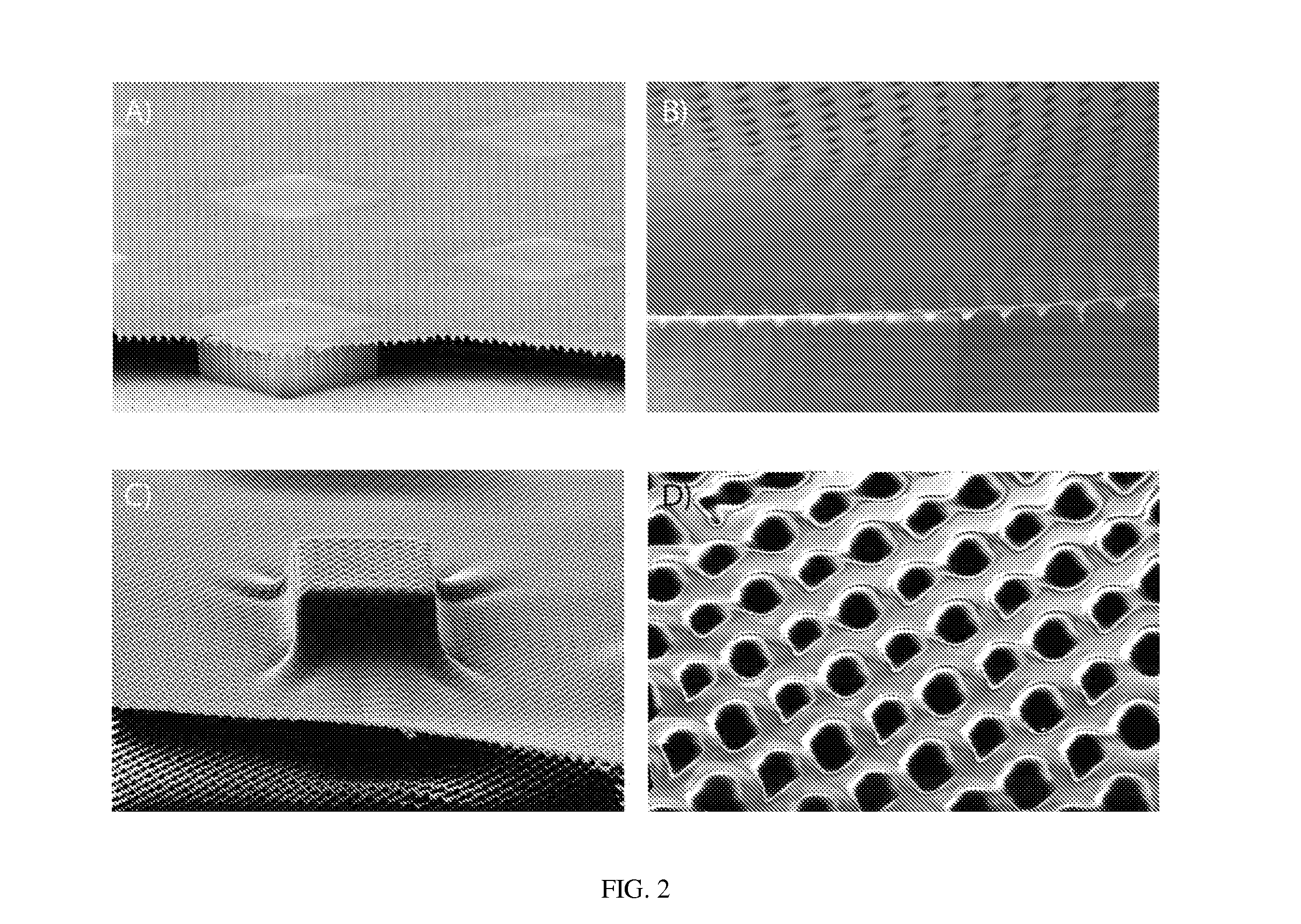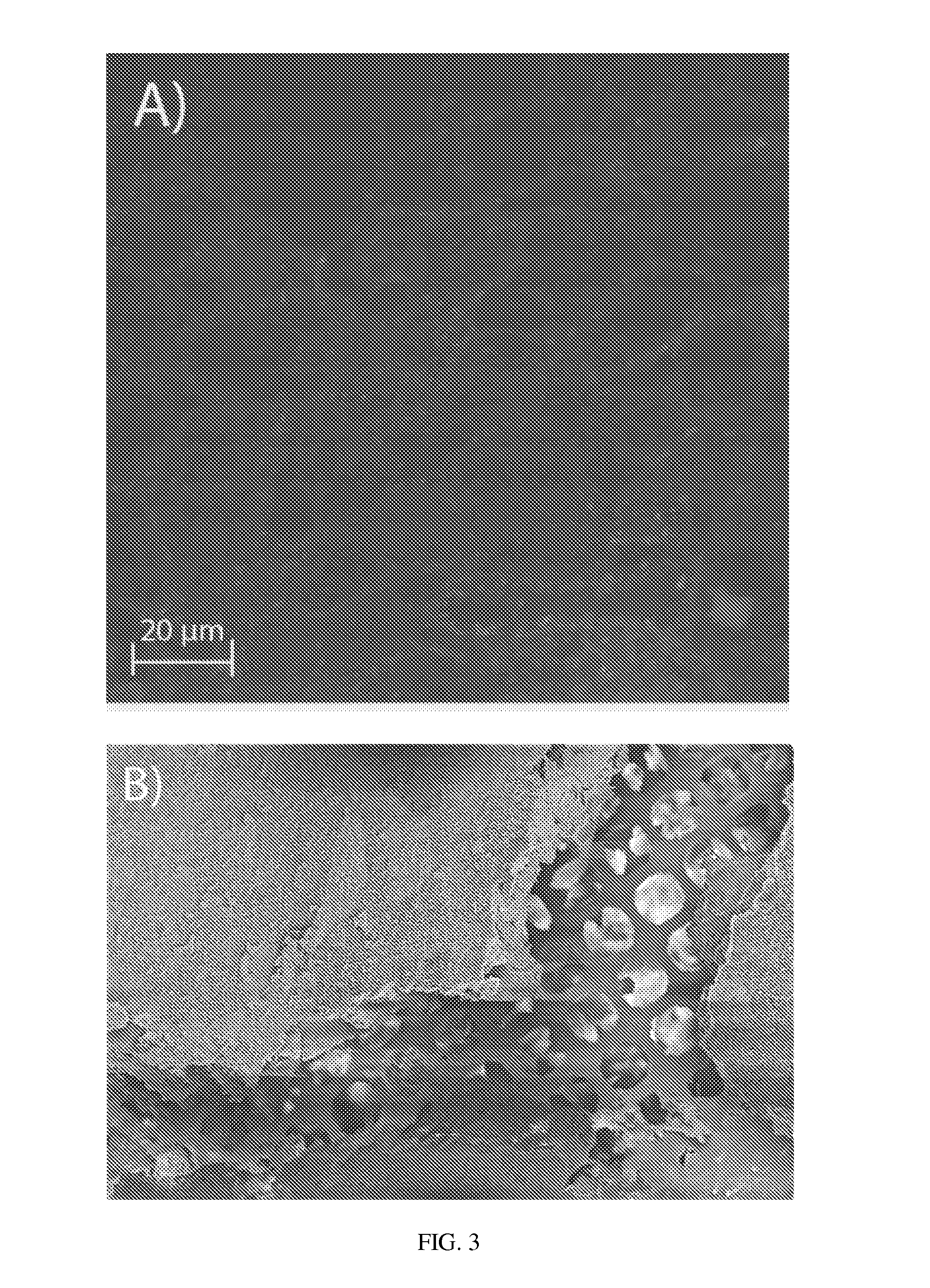Porous membrane apparatus, method, and applications
a membrane apparatus and membrane technology, applied in the field of microfluidic cell culture systems, can solve the problems of affecting the culture of tissues, metabolites produced in one tissue can travel, and none of these models recreate the three-dimensional villi structure that increases the absorption area
- Summary
- Abstract
- Description
- Claims
- Application Information
AI Technical Summary
Benefits of technology
Problems solved by technology
Method used
Image
Examples
example 1
Fabrication of Microfluidic Chambers with Flat Porous Membranes
[0063]According to one embodiment, a membrane fabrication technique consists of a two-step exposure of a 50 μm thick SU-8 layer spun on a silicon wafer. The first exposure defines the walls of the microfluidic chamber as well as membrane support posts inside the chamber. The second exposure is a partial exposure that cross-links the top 0.5-4 μm of the remaining SU-8. An embodiment is represented in FIG. 1A.
[0064]Other photosensitive materials may be used, including but not limited to KMPR, acrylate-based Intervia BPN, and many other materials.
[0065]According to one aspect, a 50 μm thick layer of SU-8 2050 (Microchem, Newton, Mass.) was spun-coated onto a silicon wafer at 2800 rpm for 60 sec and soft baked at 65° C. for 2 min, then 95° C. for 5 min before patterning using the EV620. Patterning of the SU-8 via the contact aligner was separated into two exposure steps: a long exposure (720 mJ / cm2) that defines the microflu...
example 2
Fabrication of Microfluidic Chambers with Porous Membranes for Three-Dimensional Caco-2 Cell Culture
[0066]According to one embodiment, porous membranes were formed over silicon pillars with square cross sections of different sizes (25, 50, or 100 μm wide) and densities (25, 50, 100, or 200 μm between pillars) using conventional photolithography techniques. An embodiment is represented in FIG. 1B. Briefly, silicon wafers were primed with P-20 primer (Shin EtsuMicroSi, Tokyo, Japan) at 3000 rpm for 30 sec and then spin coated with a 2-μm-thick layer of SC 1827 photoresist (3000 rpm for 30 sec) (Shipley, Marlborough, Mass.) baked for 1 min at 115° C. Pillar arrays were then patterned into the photoresist at 96 mJ / cm2 with an EV620 contact aligner (Electronic Visions Inc., Phoenix, Ariz.) and developed in AZ 300 MIF (AZ Electronic Materials, Somerville, N.J.) for 1-2 min. Pillars 100 um tall were etched into the silicon via Bosch fluorine etch (Unaxis 770 Si Etcher, Plasma-Therm Inc., S...
example 3
Fabrication of Microfluidic Chambers with Three-Dimensional Porous Membranes and Increased Chamber Depth
[0068]According to another embodiment, silicon pillars were created using an alternative method. Pursuant to this method a silicon nitride film was grown (500 nm) at 1100° C. on silicon wafers (Silicon Quest, Santa Clara, Calif.) using the process gases SiH2Cl2, NH3, and N2O in a furnace tube. The wafers were then coated with photoresist S1813 (Shipley, Marlborough, Mass.) at a spin speed of 3000 rpm and the area surrounding the pillars was exposed for 4 s using an AB-M HTG 3HR contact aligner (AB-M, San Jose, Calif.). They were then developed for 2 min and the exposed silicon nitride was removed using a reactive ion etcher (Oxford 80, Oxford Instruments, Tubney Woods, Abingdon, Oxfordshire, OX13 5QX, UK) with 50 sccm CHF3 and 2 sccm O2 at 50 mTorr and 200 W. The exposed substrate was etched to a depth of 20 μm using a 50% KOH solution at 80° C. The remaining silicon nitride was r...
PUM
| Property | Measurement | Unit |
|---|---|---|
| thickness | aaaaa | aaaaa |
| chamber depths | aaaaa | aaaaa |
| distance | aaaaa | aaaaa |
Abstract
Description
Claims
Application Information
 Login to View More
Login to View More - R&D
- Intellectual Property
- Life Sciences
- Materials
- Tech Scout
- Unparalleled Data Quality
- Higher Quality Content
- 60% Fewer Hallucinations
Browse by: Latest US Patents, China's latest patents, Technical Efficacy Thesaurus, Application Domain, Technology Topic, Popular Technical Reports.
© 2025 PatSnap. All rights reserved.Legal|Privacy policy|Modern Slavery Act Transparency Statement|Sitemap|About US| Contact US: help@patsnap.com



